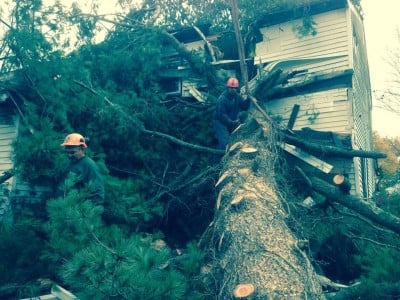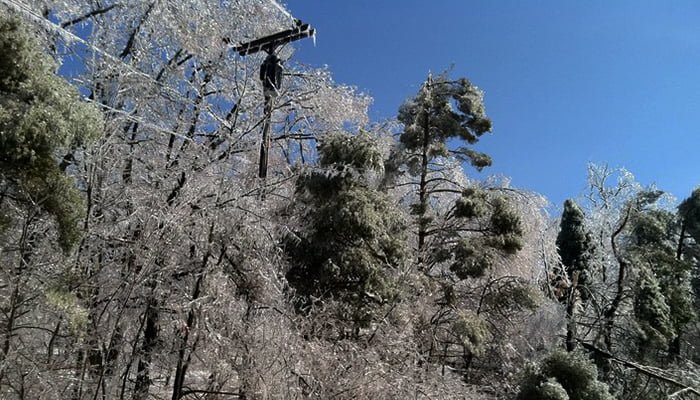With winter comes rapid fluctuations in temperatures, storms, and precipitation. In areas that experience harsh winters, it is unfortunately inevitable that all exterior elements of your property will take somewhat of a beating. Your trees in winter will experience different forms of stress that can be directly correlated to damages.
With temperature fluctuation in winter, from night time freezing to day time thawing, like anything else in these conditions, your trees will experience expanding. The expanding associated with the freeze-thaw cycle of winter can cause stress between the outer bark and the inner wood. This stress can lead to cracking. Another cold stress that can occur during the winter months is the impact of frost on late growth. This may have been of bigger concern this season, since temperatures have remained much warmer than average for an extended period of time, encouraging growth later.
Prevention and solution:
There are few preventative measures that can be taken to avoid winter tree cracking, but in most cases, the tree will heal itself. However, your young trees in winter, and those not native to a cold weather atmosphere can suffer more damage. For these trees, you can wrap the bark as a prevention method, prior to winter. To prevent new growth from being affected by early frost, wait to prune trees until they have reached a dormant state in the fall, as pruning encourages new growth.
Drought:
During the winter months, drought can occur. Winter drought can lead to drying out of trees, particularly your evergreens. This drying occurs when a tree loses more water than it can absorb from a ground that is frozen. This can worsen in early spring when the ground is still frozen, but the temperatures are higher, and the sun is stronger.
Prevention and solution:
Laying down a layer of mulch around the base of your trees, before winter, can help to maintain moisture and a steadier temperature for the root system.
Breakage:

During cold months and storms, branches are more vulnerable to breakage. Not only do the branches harden and become more brittle, but the additional weight of snow and ice significantly increases the chances for breakage. Limb failure can be a huge hazard to surrounding property and potentially people.
Prevention and solution:
Having a hazard analysis done on your property is extremely important before going into winter. A trained professional can spot weak limbs, and potential hazards that may not be visible to the untrained eye. By pruning and/or removing these weakened or cracked limbs, you can avoid costly and devastating damages to your home and property. In some cases, tree removal may be necessary.
Now is the time to prepare your property and trees for the winter months. Trees in winter can be affected like any other exterior element. It is important to hire a professional to evaluate your property, and execute any necessary preparations prior to our first snow, and before we head into December. Contact Red Cedar today for your free tree service and maintenance consultation, and make sure your trees are ready for winter!



